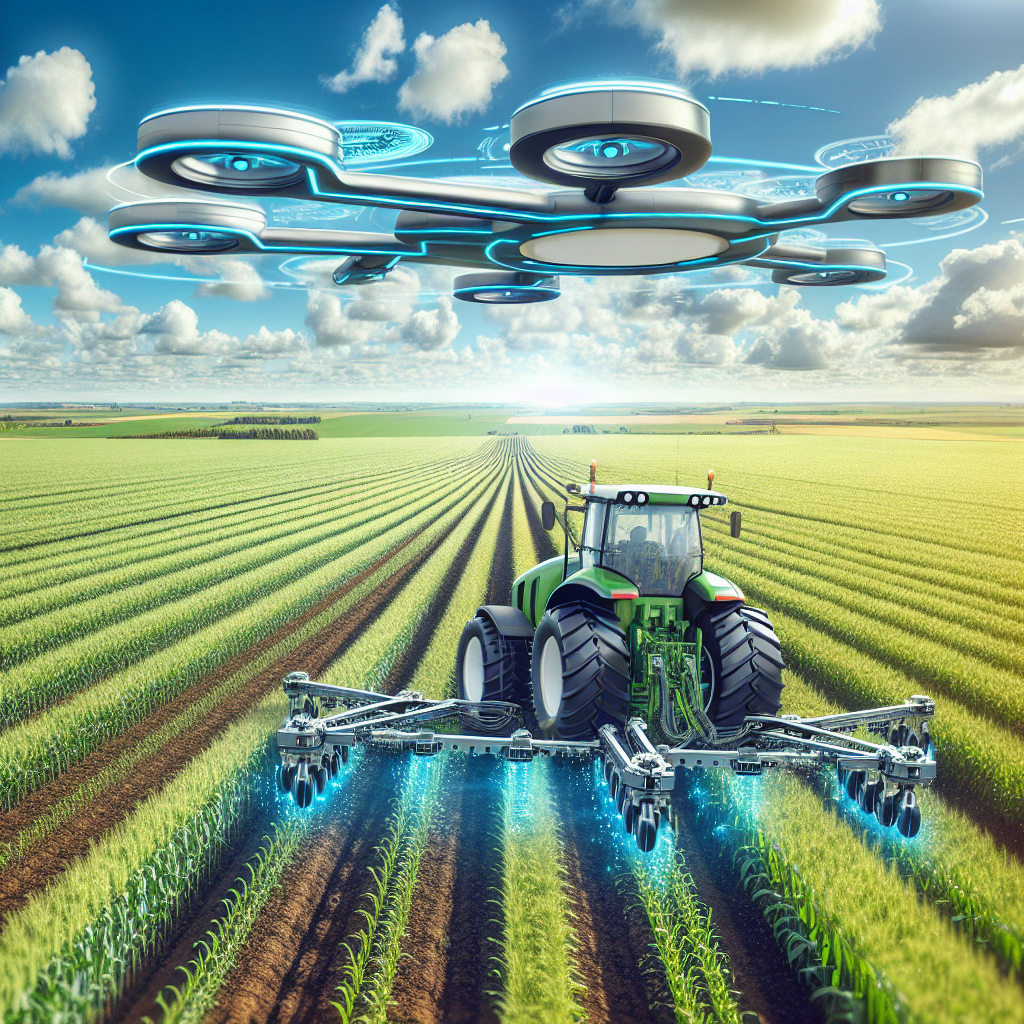Agriculture has been a cornerstone of human civilization for thousands of years, providing the food and resources necessary for human survival. However, as the global population continues to grow, the demand for food is increasing at an unprecedented rate. This has put immense pressure on farmers to produce more food in a sustainable and efficient manner.
In recent years, robotics and artificial intelligence (AI) have emerged as powerful tools in the field of agriculture, revolutionizing the way crops are planted, monitored, and harvested. These technologies have the potential to significantly increase productivity, reduce labor costs, and minimize the environmental impact of farming practices. In this article, we will explore the role of robotics and AI in agriculture and examine how these technologies are shaping the future of food production.
Role of Robotics in Agriculture
Robotics has the potential to transform agriculture by automating labor-intensive tasks and increasing efficiency on the farm. One of the most significant applications of robotics in agriculture is in the realm of planting and harvesting crops. Autonomous tractors and robotic planters can plant seeds with precision and accuracy, ensuring optimal spacing and reducing waste. Harvesting robots can also pick fruits and vegetables with speed and efficiency, minimizing the need for manual labor.
In addition to planting and harvesting, robotics can also be used for monitoring and managing crops. Drones equipped with sensors and cameras can fly over fields to collect data on crop health, soil moisture levels, and pest infestations. This information can then be used to make informed decisions about irrigation, fertilization, and pesticide application. By providing farmers with real-time data, drones can help optimize crop yields and reduce the use of inputs.
Another area where robotics is making a significant impact in agriculture is in the field of weeding and pest control. Autonomous robots equipped with cameras and AI algorithms can identify and target weeds with precision, reducing the need for herbicides and manual labor. Similarly, robotic sprayers can apply pesticides with accuracy and efficiency, minimizing the risk of overuse and environmental contamination.
Overall, robotics has the potential to revolutionize agriculture by streamlining operations, increasing productivity, and reducing the environmental impact of farming practices. As the technology continues to advance, we can expect to see even greater innovation in the field of agricultural robotics.
Role of AI in Agriculture
Artificial intelligence (AI) is another transformative technology that is shaping the future of agriculture. AI algorithms can analyze vast amounts of data to make predictions and recommendations that can help farmers make informed decisions about crop management. One of the key applications of AI in agriculture is in the realm of precision farming.
Precision farming involves using data-driven technologies to optimize crop production and minimize waste. AI algorithms can analyze data from sensors, satellites, and drones to create detailed maps of fields and identify areas that require attention. This information can then be used to tailor irrigation, fertilization, and pesticide applications to the specific needs of each crop, maximizing yields and reducing input costs.
AI can also be used to predict crop yields and market prices, allowing farmers to make strategic decisions about planting and selling their crops. By analyzing historical data and current market trends, AI algorithms can provide valuable insights that can help farmers maximize their profits and minimize their risks.
In addition to precision farming, AI is also being used in the development of crop breeding and genetic engineering. By analyzing genetic data and predicting the traits of different plant varieties, AI algorithms can help breeders create new varieties that are more resilient to climate change, pests, and diseases. This can help farmers increase their yields and adapt to changing environmental conditions.
Overall, AI has the potential to revolutionize agriculture by providing farmers with valuable insights and recommendations that can help optimize crop production and increase profitability. As the technology continues to evolve, we can expect to see even greater innovation in the field of agricultural AI.
FAQs about Robotics and AI in Agriculture
Q: How are robotics and AI being used in agriculture today?
A: Robotics and AI are being used in agriculture in a variety of ways, including planting and harvesting crops, monitoring and managing crop health, and weeding and pest control. These technologies are helping farmers increase productivity, reduce labor costs, and minimize environmental impact.
Q: What are the benefits of using robotics and AI in agriculture?
A: The benefits of using robotics and AI in agriculture include increased productivity, reduced labor costs, and improved sustainability. These technologies can help farmers optimize crop yields, minimize waste, and make informed decisions about crop management.
Q: Are robotics and AI replacing human labor in agriculture?
A: While robotics and AI are automating many labor-intensive tasks in agriculture, they are not replacing human labor entirely. Instead, these technologies are augmenting human labor by increasing efficiency and productivity on the farm.
Q: How affordable are robotics and AI technologies for small-scale farmers?
A: The cost of robotics and AI technologies varies depending on the specific application and complexity of the system. While some technologies may be cost-prohibitive for small-scale farmers, there are also affordable options available that can provide significant benefits.
Q: What are some of the challenges facing the adoption of robotics and AI in agriculture?
A: Some of the challenges facing the adoption of robotics and AI in agriculture include high initial costs, lack of technical expertise, and concerns about data privacy and security. However, as the technology continues to advance, these challenges are likely to be overcome.
In conclusion, robotics and AI are revolutionizing the field of agriculture by increasing efficiency, productivity, and sustainability. These technologies have the potential to transform the way food is produced and help farmers meet the growing demand for food in a rapidly changing world. As robotics and AI continue to evolve, we can expect to see even greater innovation in the field of agricultural technology, leading to a more sustainable and productive future for farming.

